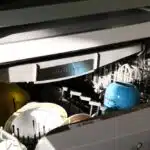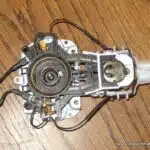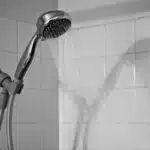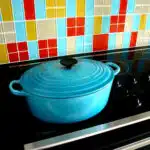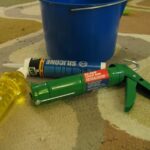As a dishwasher cleaning expert, I have found that many people overlook the importance of maintaining their dishwasher. A dirty dishwasher not only affects the cleanliness of your dishes but can also reduce the lifespan of your appliance. Fortunately, cleaning your dishwasher is an easy and fast process that can be done with just a few simple steps.
In this article, we will explore various methods for cleaning your dishwasher to ensure it runs efficiently and effectively. We will cover both natural and chemical-based solutions that are safe for your dishwasher and the environment. So whether you’re a busy parent trying to keep up with household chores or a professional chef looking to maintain a spotless kitchen, these tips will help you achieve optimal results in no time.
The Importance Of Regular Dishwasher Maintenance
Imagine your dishwasher as a loyal servant that tirelessly cleans your dishes after each meal. It gets rid of grease, food residue, and germs, leaving your plates and utensils spotless and hygienic. However, just like any other machine or appliance, dishwashers need regular maintenance to keep them functioning efficiently. Neglecting to upkeep your dishwasher can lead to costly repairs in the future.
The importance of dishwasher efficiency cannot be overstated. A poorly maintained dishwasher can result in dishes coming out stained or with remaining food particles stuck on them. This can force you to rewash them, wasting water and electricity. Additionally, cleaning up after a malfunctioning dishwasher can be time-consuming and frustrating.
Cost-effective dishwasher maintenance is essential if you want to avoid these problems. By taking care of your appliance, you’ll be extending its lifespan while also saving yourself money in the long run. Regular cleaning and upkeep can prevent blockages caused by food debris and hard water deposits and ensure that all components are working correctly.
Next, we will explore some telltale signs that indicate it’s time to clean your dishwasher thoroughly.
Signs Your Dishwasher Needs Cleaning
- One sign that a dishwasher needs to be cleaned is an unpleasant odor emanating from the appliance.
- Another common sign that a dishwasher needs to be cleaned is the presence of residue on dishes and in the dishwasher itself.
- Cleaning a dishwasher can often be accomplished quickly and easily if the proper supplies and techniques are employed.
- Regular maintenance and cleaning of a dishwasher can help to ensure that the appliance is operating optimally and safely.
Odors
If you notice an unpleasant odor coming from your dishwasher, it’s time to take action. Removing odors is an important part of maintaining the cleanliness and functionality of your dishwasher. One easy method for removing odors is to run a cycle with vinegar. Simply pour one cup of white vinegar into the bottom of your dishwasher and run a hot water cycle. This will help remove any buildup that may be causing the odor and leave your dishwasher smelling fresh.
Preventing buildup is another key factor in keeping odors at bay. Make sure to scrape off excess food before loading dishes, as this can lead to buildup over time. Additionally, using a rinse aid can help prevent mineral buildup and keep your dishwasher running efficiently. It’s also important to regularly clean the filters and spray arms to ensure proper water flow and prevent debris from accumulating.
In conclusion, removing odors and preventing buildup are essential steps in maintaining a clean and functional dishwasher. By following these easy methods, you can ensure that your dishes come out sparkling clean and free from any unpleasant smells. So next time you notice an odor coming from your dishwasher, don’t ignore it – take action right away with these quick and effective cleaning tips!
Residue
As a dishwasher cleaning expert, it’s important to recognize the signs that your dishwasher needs cleaning. One of the most common issues is residue buildup. This can occur when leftover food particles and soap scum accumulate over time, leading to a murky film on your dishes and an unpleasant odor in your dishwasher.
Removing residue is crucial for maintaining a clean and functional dishwasher. One effective method is to use a commercial dishwasher cleaner. Simply follow the instructions on the package and run a hot water cycle with no dishes inside. This will help break down any buildup and leave your dishwasher sparkling clean.
Preventing residue buildup is also key in keeping your dishwasher running smoothly. Make sure to scrape off excess food before loading dishes, and consider using a rinse aid to prevent mineral buildup. It’s also important to regularly clean the filters and spray arms to ensure proper water flow and prevent debris from accumulating.
By taking action to remove and prevent residue buildup, you can ensure that your dishes come out clean and free from any unwanted residue or odors. As someone who has a subconscious desire for serving others, maintaining a clean dishwasher is essential in providing hygienic meals for yourself and loved ones. So make sure to keep an eye out for signs of residue buildup, and take action promptly with these effective cleaning tips!
Preparing Your Dishwasher For Cleaning
After identifying the signs that your dishwasher needs a good cleaning, it’s time to prepare it for the task. Before diving into the cleaning process, there are some pre-cleaning steps you should take to ensure optimal results. First, remove any large chunks of food or debris from the dishwasher’s filter and spray arm. Next, run hot water through the sink near the dishwasher to ensure that only hot water is entering the machine. Lastly, check for any leaks and repair them before proceeding with the cleaning process.
One of the most common mistakes people make when cleaning their dishwasher is using too much detergent or bleach. These products can damage your machine if used excessively or improperly. Instead, opt for natural cleaning solutions like vinegar and baking soda which are effective yet gentle on your dishwasher. You’ll also want to avoid using abrasive tools like steel wool or scouring pads as they can scratch and damage your machine’s interior.
When preparing to clean your dishwasher, you’ll need a few essential tools such as vinegar, baking soda, a soft-bristled brush, and a microfiber cloth. The time required for this task may vary depending on how dirty your dishwasher is but typically takes about 30 minutes from start to finish. With these preparations in place, you’re ready to tackle method 1: vinegar and baking soda solution – an effective and eco-friendly way to clean your dishwasher without harsh chemicals.
Method 1: Vinegar And Baking Soda Solution
To clean your dishwasher, one of the most effective and easy methods is to use a vinegar and baking soda solution. Vinegar has numerous benefits, including its ability to dissolve mineral deposits and remove any lingering odors. Additionally, baking soda acts as a natural abrasive that can help scrub away any stubborn stains or grime.
To make the solution, start by removing any large debris from the dishwasher’s interior. Then, place a cup of white vinegar in a dishwasher-safe container on the top rack of the machine. Run the dishwasher on its hottest cycle with no other dishes or detergent inside. Once it’s finished, sprinkle one cup of baking soda along the bottom of the dishwasher and run another hot cycle.
However, there are some common mistakes to avoid when using this method. For example, do not mix vinegar and bleach as this can create toxic fumes. Also, be sure to only use white vinegar as other types may stain or damage your dishwasher’s interior. By following these tips and properly utilizing a vinegar and baking soda solution, you can have a clean and fresh-smelling dishwasher in no time!
Method 2: Lemon Juice And Borax Solution
- Ingredients for the Lemon Juice and Borax Solution include one cup of lemon juice and one cup of Borax.
- To prepare the solution, mix one cup of lemon juice and one cup of Borax in a bowl until they are completely combined.
- The solution should be applied to the interior of the dishwasher by wiping it onto the surfaces with a cloth or sponge.
- Once the surfaces have been wiped with the solution, it is important to leave it to sit for at least 10 minutes before rinsing it off.
- Finally, run the dishwasher with hot water, and the cycle should be completed.
- This method is an effective and efficient way to clean your dishwasher, and it is also an easy and cost-effective solution.
Ingredients
Natural alternatives are always a great option when it comes to cleaning your dishwasher. Homemade solutions are easy, cost-effective, and do not contain any harsh chemicals or toxic substances that may harm the environment. One of the most effective natural solutions for cleaning your dishwasher is a combination of lemon juice and borax.
Lemon juice is a powerful natural cleaner that can effectively remove dirt, grime, and stains from your dishwasher. It contains citric acid which helps break down grease and food particles while leaving behind a fresh citrus scent. Borax, on the other hand, is a naturally occurring mineral that has been used for centuries as an effective cleaning agent. When combined with lemon juice, borax creates a powerful solution that can dissolve tough stains and eliminate foul odors in your dishwasher.
To make the lemon juice and borax solution, start by mixing 1 cup of lemon juice with 1/4 cup of borax in a bowl until well combined. Next, pour the mixture into the detergent dispenser of your dishwasher and run it through a regular cycle. The acidic properties of the lemon juice will help break down any food particles or grease buildup while the borax acts as a natural disinfectant to kill bacteria and eliminate any unpleasant odors. This method is not only effective but also safe for you and the environment.
Preparation
Before using the lemon juice and borax solution to clean your dishwasher, it is important to take some pre-cleaning steps. First, remove any large food particles or debris from the dishwasher’s filter and spray arm. This will ensure that the solution can effectively reach all areas of your dishwasher. Next, check for any damage or cracks in the dishwasher’s interior or racks, as these could be further damaged by the cleaning solution. Additionally, make sure that you have all the necessary tools such as a bowl and measuring cups to prepare the solution properly.
One common mistake when using natural cleaning solutions is using too much of them. It is important to follow the recommended measurements when preparing the lemon juice and borax solution to avoid damaging your dishwasher’s interior or leaving behind a residue. Another mistake is not allowing enough time for the solution to sit inside the dishwasher before running a cycle. Allow at least 15 minutes for the mixture to work its magic before starting a regular cycle.
To start preparing Method 2: Lemon Juice and Borax Solution, mix 1 cup of lemon juice with 1/4 cup of borax in a bowl until well combined. Once prepared, pour this mixture into your dishwasher’s detergent dispenser and run it through a regular cycle. After completing this step, wait for another 15-30 minutes after finishing the cycle before opening your dishwasher door. This will allow any remaining steam inside to escape without causing any harm to you or your kitchen surfaces.
Application
After taking the necessary pre-cleaning steps, it’s time to apply Method 2: Lemon Juice and Borax Solution to clean your dishwasher. This DIY solution offers several benefits, including being an affordable and natural alternative to professional cleaning services. It also effectively removes grease and grime buildup inside your dishwasher without leaving behind any harsh chemical residue.
However, there are some challenges that come with using a DIY cleaning solution like this one. One of the most common mistakes is not following the recommended measurements when preparing the solution or not allowing enough time for it to sit before running a cycle. Another challenge is ensuring that all areas of your dishwasher are reached with the solution, especially hard-to-reach corners or crevices.
To apply this method, start by mixing 1 cup of lemon juice with 1/4 cup of borax in a bowl until well combined. Pour this mixture into your dishwasher’s detergent dispenser and run it through a regular cycle. Remember to wait at least 15 minutes after finishing the cycle before opening your dishwasher door to allow remaining steam to escape safely. With these steps, you can achieve a cleaner and fresher-smelling dishwasher without spending money on professional cleaning services.
Method 3: Commercial Dishwasher Cleaner
Moving on to Method 3: Commercial Dishwasher Cleaner. As a dishwasher cleaning expert, I highly recommend using commercial dishwasher cleaners as they are specially formulated to tackle tough stains, grease, and bacteria buildup. These cleaners come in various forms such as powders, tablets, and liquids. Some of the best brands available in the market include Finish, Cascade, and Lemi Shine.
If you prefer DIY alternatives over commercial products, you can mix baking soda and vinegar to create a homemade dishwasher cleaner. However, keep in mind that DIY solutions may not be as effective as commercial ones since they do not contain specific enzymes and surfactants that target tough stains and bacteria. Moreover, using an excessive amount of vinegar can damage your dishwasher’s rubber seals.
Incorporating commercial dishwasher cleaners into your cleaning routine will ensure your dishwasher stays clean and odor-free for longer periods. However, it is essential to follow the manufacturer’s instructions when using these products to avoid any damage to your machine. Keep reading to discover Method 4: Dishwasher Deep Clean Cycle for thorough cleaning of your appliance.
Method 4: Dishwasher Deep Clean Cycle
The dishwasher deep clean cycle is a highly effective method for removing tough stains, greases, and odors in your dishwasher. This process involves running the dishwasher on a high-temperature setting with added cleaning agents to remove any buildup that may have accumulated over time. The benefits of deep cleaning include better performance, longer lifespan of your appliance, and improved hygiene.
To ensure the best results when using the dishwasher deep clean cycle, it is important to follow some best practices. Firstly, make sure you remove any large debris or food particles from the dishwasher before starting the cycle. This prevents clogging of filters or spray arms during the wash. Secondly, choose an appropriate cleaner that is specifically designed for dishwashers. Avoid using regular detergent or bleach as they can damage your appliance and affect its performance.
When running the deep clean cycle, it is recommended to leave the dishwasher empty except for the cleaning agent. This allows for maximum exposure of all parts to the cleaning solution. Once completed, inspect all parts of your dishwasher including spray arms, filters and nozzles for any signs of buildup or blockages that may hinder its performance. In our next section we will discuss how to effectively clean these critical components in maintaining an optimal performing dishwasher.
Cleaning The Spray Arms
As a dishwasher cleaning expert, I understand that spray arm maintenance is a crucial aspect of keeping your dishwasher in top working condition. The spray arms are responsible for distributing water throughout the dishwasher, ensuring that every dish is cleaned thoroughly. Over time, however, debris and mineral buildup can clog the spray arm’s tiny holes, causing poor performance and even damage to your machine.
To prevent buildup on your spray arms, it’s essential to clean them regularly. Start by removing the spray arms from your dishwasher carefully. In most models, this can be accomplished by unscrewing a small nut or clip at the base of each arm. Once removed, soak the arms in a mixture of warm water and vinegar for about an hour to dissolve any mineral deposits.
After soaking, rinse the spray arms thoroughly with hot water and use a toothbrush or other soft-bristled brush to gently scrub away any remaining buildup. Be sure to pay extra attention to the small holes in the arms where water sprays out; these are often where debris accumulates. Once cleaned, reinstall the spray arms back into your dishwasher and run it through a cycle to ensure everything is working correctly.
As you can see, preventing buildup on your dishwasher’s spray arms isn’t difficult with regular maintenance. By following these simple steps, you’ll ensure that your dishes come out sparkling clean every time. In our next section, we’ll discuss how to remove and clean your filters properly – another essential step in maintaining optimal dishwasher performance!
Removing And Cleaning The Filters
Filter maintenance is a vital aspect of keeping your dishwasher running efficiently. The filters are responsible for trapping food particles, preventing them from clogging the drain or recirculating onto your dishes. Over time, these filters can become clogged with debris and need to be cleaned or replaced.
To remove and clean the filters, start by consulting your dishwasher manual to locate them. Typically, there are two types of filters: a coarse filter that catches larger debris and a fine filter that captures smaller particles. Remove both filters and rinse them under hot water to dislodge any food particles or buildup. If they are particularly dirty, use a soft brush or toothbrush to scrub away stubborn grime.
Clogged filters not only impair dishwasher performance but can also cause unpleasant odors in your kitchen. To avoid this problem, it’s recommended to clean the filters at least once a month. Additionally, inspect the filters regularly for signs of damage such as cracks or tears that may warrant replacement.
Markdown list:
- Consult your manual to locate the filters
- Remove both coarse and fine filters
- Rinse under hot water
- Use a soft brush if necessary
- Inspect regularly for damage
As an expert in dishwasher cleaning, I cannot stress enough how important it is to keep up with filter maintenance. By following these simple steps and incorporating regular inspections into your routine, you’ll ensure that your dishwasher operates at peak efficiency while preventing any unwanted odors from emanating in your kitchen.
With proper filter care out of the way, we can move on to cleaning the door and seals. This step is crucial in maintaining overall cleanliness as buildup around the door can lead to mold growth and unsanitary conditions.
Cleaning The Door And Seals
- Removing stains from the door of a dishwasher requires the use of gentle cleaning solutions like a mixture of warm water and dish soap, or a vinegar and baking soda solution.
- To clean the gaskets of a dishwasher, it is important to first use a vacuum or soft brush attachment to remove any debris or food particles that may be stuck in the crevices.
- After removing the debris, a damp cloth should be used to apply a mild detergent to the gasket and wiped clean.
- Finally, the gasket should be wiped dry with a clean cloth to help prevent the buildup of mold and mildew.
Removing Stains
Removing tough stains from the dishwasher door and seals is an essential part of maintaining its cleanliness. The accumulated grime on these surfaces can create an unsightly appearance and spread unpleasant odors. To remove tough stains, you can use a mixture of baking soda and vinegar. First, sprinkle baking soda onto a damp cloth and scrub the stained areas with it. Then, pour vinegar onto the same cloth and scrub again. Rinse with water to remove any remaining residue.
Preventing future stains is equally important in keeping your dishwasher looking clean and fresh. One way to do this is by wiping down the door and seals after each use with a dry towel or sponge to remove any excess moisture that could lead to mold growth or staining. Additionally, avoid using harsh chemical cleaners as they can damage the finishes on the door and seals over time. Instead, opt for natural cleaning solutions such as lemon juice or hydrogen peroxide mixed with water.
Maintaining a clean dishwasher not only ensures optimal performance but also extends its lifespan. Removing tough stains from the door and seals can be achieved using simple household ingredients like baking soda and vinegar while preventing future stains requires consistent maintenance practices such as wiping down these surfaces after each use. By implementing these easy methods, you can keep your dishwasher looking sparkling clean for years to come!
Cleaning Gaskets
To maintain the cleanliness of a dishwasher, it is crucial to clean not only the door but also its seals. These areas are prone to accumulating grime and dirt due to their constant contact with moisture and food residue. Cleaning the gaskets, in particular, is an important task that should not be overlooked. Gaskets are rubber or silicone seals that run around the edges of the dishwasher door and prevent water from leaking out during a cycle. Over time, these gaskets can become dirty and even develop mold, which can affect their performance and cause unpleasant odors.
To clean gaskets effectively, start by wiping them down with a damp cloth to remove any loose debris. Then, using bleach diluted with water (one part bleach to ten parts water), scrub the gaskets thoroughly with a toothbrush or soft bristle brush. Ensure that all crevices are covered with this solution before letting it sit for 10-15 minutes. Afterward, rinse off the bleach solution with clean water and dry the gaskets completely using a microfiber towel or paper towel. Repeat this process every few months or when you notice visible signs of mold or mildew on your dishwasher’s gaskets.
If your dishwasher’s gaskets are past cleaning or have become damaged over time, replacing them may be necessary. To do this, first turn off your dishwasher’s power supply at the circuit breaker box then open up your dishwasher’s door and locate where the gasket is attached to the door frame. Carefully remove it by pulling it out of its groove and discard it properly. Next, install the new gasket in place by pushing it into its groove until it fits securely all around the door frame perimeter. Finally, turn back on your dishwasher’s power supply and run an empty cycle to ensure that there are no leaks present from your newly installed gasket.
In conclusion, cleaning your dishwasher’s seals including its gaskets is an essential aspect of maintaining its overall cleanliness and functionality. While using bleach is an effective method for cleaning gaskets, it’s crucial to replace them if they’re beyond repair, so your dishwasher can continue functioning efficiently.
Cleaning The Exterior Of Your Dishwasher
When it comes to cleaning your dishwasher, many people tend to overlook the exterior of the appliance. However, it is just as important to keep the outside clean as it is to maintain the inside. Not only does a dirty exterior affect the overall appearance of your kitchen, but it can also lead to the buildup of grime and bacteria over time.
To start cleaning the exterior of your dishwasher, gather all necessary supplies such as a mild detergent, warm water, and a soft cloth or sponge. Avoid using abrasive or harsh cleaners that can damage the finish of your dishwasher. Begin by wiping down any visible stains or marks with a damp cloth. For tougher stains or stubborn grime, create a solution using warm water and dish soap and gently scrub until the stain disappears.
For those looking for DIY cleaning hacks, vinegar is a great alternative cleaning solution that can effectively remove dirt and grime from your dishwasher’s exterior. Simply mix equal parts vinegar and water in a spray bottle and apply directly onto the surface. Allow it to sit for a few minutes before wiping away with a clean cloth. If you prefer using recommended cleaning products, there are many options available specifically designed for dishwasher exteriors that are safe to use on various types of finishes.
Next up: maintaining a clean dishwasher without spending hours on upkeep!
Maintaining A Clean Dishwasher
Having a clean exterior on your dishwasher is important, but it is equally important to maintain a clean interior. Preventing buildup inside the dishwasher is crucial for ensuring that it continues to function properly and effectively. One way to prevent buildup is by regularly cleaning the dishwasher’s filter. The filter should be removed and cleaned at least once a month, or more often if you use your dishwasher frequently.
In addition to regular filter cleaning, there are other quick cleaning techniques that can help keep your dishwasher running smoothly. For example, running an empty cycle with vinegar or baking soda can help remove any lingering odors and disinfect the interior of the machine. You can also wipe down the interior of the dishwasher with a damp cloth or sponge after each use to prevent food particles from accumulating.
By implementing these preventative measures, you can avoid many common issues that arise with dishwashers. However, even with proper maintenance, problems may still occur. In the next section, we will discuss some troubleshooting tips for common dishwasher issues such as clogs and leaks.
Troubleshooting Common Dishwasher Issues
When it comes to dishwashers, they are an essential appliance in most homes. They make life easier by cleaning dishes and utensils, but like all machines, they can malfunction. Troubleshooting common dishwasher issues can be a simple process if you follow certain measures.
Preventive maintenance is crucial to the longevity of your dishwasher. Clean the interior of your dishwasher regularly using a soft cloth or sponge and mild detergent. Additionally, inspect the spray arm and unclog any debris that may impede its performance.
DIY repairs are also possible for some dishwasher problems. For instance, if you notice that water is not draining from your dishwasher, it could be due to a clogged drain hose or garbage disposal unit. If this is the case, remove any obstructions from these areas and test the dishwasher again. Remember to always follow safety guidelines when performing DIY repairs.
- How-to bullet point list:
- Remove leftover food particles before loading dishes
- Use only recommended detergents and rinse aids
- Inspect the gasket for cracks or damage and replace if necessary
In summary, preventive maintenance combined with DIY repairs can help extend the lifespan of your dishwasher while saving money on service calls. In the next section, we will discuss tips for extending the lifespan of your dishwasher even further.
Tips For Extending The Lifespan Of Your Dishwasher
Regular maintenance of a dishwasher is essential for its longevity, as it can help prevent costly repairs. This can be done by running a cleaning cycle using a commercial dishwasher cleaner or a mixture of white vinegar and baking soda. Overloading the dishwasher can also reduce its lifespan by causing its components to wear out quickly. To prevent this, it is important to only fill the dishwasher with dishes that can fit comfortably and move freely during the washing cycle.
Regular Maintenance
As a dishwasher cleaning expert, I understand the importance of regular maintenance in extending the lifespan of your appliance. It is recommended to clean your dishwasher at least once a month to prevent buildup of food particles and mineral deposits that can hinder its performance. By doing so, you ensure that your dishes are cleaned effectively and efficiently every time.
There are various techniques you can use for regular maintenance of your dishwasher. Firstly, remove any leftover food particles from the filter and spray arms. Then, run a cycle with hot water and vinegar to remove any mineral buildup. You can also use specialized dishwasher cleaners that are available in the market to keep your appliance in top condition. Additionally, it is important to check the seals on the door regularly to ensure that they are not damaged or worn out.
Frequency is key when it comes to maintaining your dishwasher’s performance and lifespan. Neglecting routine maintenance can lead to clogs, leaks, and other issues which may ultimately result in costly repairs or replacement. Therefore, make sure that you incorporate regular cleaning into your household chores to keep your dishwasher functioning smoothly for years to come.
Avoid Overloading
Proper loading is a crucial aspect in maintaining your dishwasher’s performance and extending its lifespan. Overloading your appliance can lead to various problems such as inadequate cleaning, damage to the spray arms or utensils, and even breakages of the dishwasher itself. As a dishwasher cleaning expert, I recommend following proper loading techniques to ensure efficient cleaning and avoid overloading.
To properly load your dishwasher, start by scraping off any excess food particles from the dishes before placing them in the racks. Make sure that the plates and utensils are spaced out evenly and not touching each other, as this could cause blockages in the spray arms. Be mindful of where you place larger items like pots or pans, which should be arranged on the bottom rack with sufficient space around them for water to circulate freely. By following these simple tips, you can prevent overloading and maintain a healthy lifespan for your appliance.
In addition to proper loading, regular maintenance is also essential in keeping your dishwasher functioning well. Neglecting routine checks can result in issues such as clogs or leaks that may require costly repairs or replacement. By incorporating maintenance tips into your household chores, such as cleaning the filter and spray arms once a month or checking seals on a regular basis, you can extend the lifespan of your dishwasher and ensure that it continues to serve you effectively for years to come.
Conclusion: The Benefits Of A Clean Dishwasher
A clean dishwasher is essential for maintaining a healthy home environment. The benefits of a clean dishwasher are numerous and cannot be overemphasized. First and foremost, a clean dishwasher ensures that your dishes come out sparkling clean and free from any germs or bacteria that may cause illness. It also prevents the buildup of grease, grime, and food particles that can clog the drainage system, leading to unpleasant odors and even damage to the machine.
On the other hand, a dirty dishwasher can pose health hazards to you and your family. When left uncleaned for extended periods, it can harbor harmful pathogens such as E.coli and salmonella which can cause severe gastrointestinal infections. Also, mold and mildew can accumulate in moist areas of the dishwasher such as the door gasket, spray arm, and filter; this can release spores into your home’s air when you run the machine. These spores can trigger allergies, asthma attacks or other respiratory problems.
In conclusion, maintaining a clean dishwasher is crucial for ensuring a safe and healthy home environment. By following simple cleaning methods like rinsing dishes before loading them into the machine, using hot water for washing, using vinegar or baking soda to deodorize and disinfect the interior parts of your dishwasher, you’ll keep it functioning correctly while prolonging its lifespan. Remember that prevention is better than cure; don’t wait until your dishwasher becomes too dirty before cleaning it!
Conclusion
Regular maintenance and cleaning of your dishwasher is essential for ensuring it operates efficiently and hygienically. Signs that your dishwasher needs cleaning include unpleasant odors, cloudy glassware, and buildup on the interior. Before cleaning, remove any large food particles from the unit’s interior and racks.
One effective method to clean your dishwasher involves using a vinegar and baking soda solution. Simply place a cup of vinegar in the top rack of an empty dishwasher, sprinkle baking soda on the bottom, then run a hot cycle. Alternatively, a lemon juice and borax solution can also be used to eliminate stains and odors.
Maintaining a clean dishwasher requires regular attention to its components including filters, spray arms, and seals. Common issues such as clogs or leaks can be addressed by removing debris from these areas or contacting a professional service technician if necessary.
Did you know that approximately 80% of all dishwashers have hard water buildup? This can lead to decreased efficiency and even damage to the appliance over time. By regularly cleaning your dishwasher with simple solutions such as vinegar or lemon juice, you can extend its lifespan while ensuring sparkling dishes every time.
As a dishwasher cleaning expert, I highly recommend taking proactive measures to maintain this important household appliance. With just a few easy steps, you can ensure your dishwasher is operating efficiently while promoting cleanliness in your home. Remember that regular cleaning not only benefits your appliance but also promotes better hygiene for you and your family.
Image Credits
- “Kitchen with new stove, microwave and dishwasher installed” by bossco (featured)





